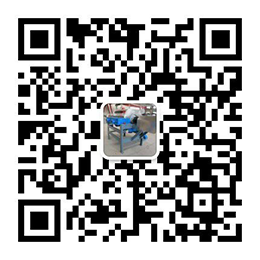An Approach to Processing of Lithium-Ion Batteries for the Zero-Waste Recovery of Materials
Magnetic Separation
To avoid oxidation, steel should be removed prior to leaching. The shredded material was sieved through No. 200 sieve to check if all the steel was present in the coarse fraction. The fine material, −200 mesh, was looked at for steel content using a hand magnet. Some ferromagnetic material in the fine fraction was observed. Therefore, the process step sequence included shredding, magnetic separation using low-intensity magnet, and then leaching.
Processing of a Larger Mass of Batteries
In order to test the rare-earth high-intensity magnetic separation rolls and the eddy-current separation, all the settled leach residues were collected after plastics removal at a 25 g/L solid to liquid ratio from four leach runs. The steel and the plastics that were removed can be seen in . The −50 mesh materials were filtered out of solution and were not treated any further. They were analyzed using XRF to determine an indicative composition. Some high specific gravity plastics, such as rings, did not float. Apart from these, the material is mostly composed of copper and aluminum. The −4 + 16 mesh fraction comprises mostly copper and aluminum . These three fractions were further processed using a Jones Splitter. Fractions of these separate sizes were chemically analyzed and further separated using high-intensity magnets and eddy current.
Rare-Earth Rolls Separation
For the +4, −4 + 16, and −16 + 50 mesh fractions, 100, 50, and 85 rpm speeds, respectively, were used at a slow feed vibration. The non-magnetic and magnetic materials for each fraction. Both the magnetic and the non-magnetic fractions were dissolved in aqua regia and analyzed using ICP analysis. In the +4 fraction, copper is a lot higher in the non-magnetic fraction. ICP results in weight percentage are shown, making it easier to compare the differences in concentration. The magnetic fraction is higher in aluminum content and shows some iron and nickel, which is probably some steel left over from magnetic separation using hand magnets. Although the separation is not fully favorable, a larger quantity of +4 mesh larger fraction would show better results.
Rare-earth rolls separation of −4 + 16 mesh fraction is shown and d for the non-magnetic and magnetic portions, respectively. Most of the aluminum is in the magnetic fraction as it is paramagnetic, while copper mostly reports to non-magnetic. The separated fractions were further sent for eddy-current separation. Both, the magnetic and the non-magnetic fractions, were analyzed using ICP, while aluminum is a lot higher in the magnetic. Also, most of the cobalt is gathered up in the magnetic fraction which is expected since it is a part of the cathode. It can be seen that aluminum was concentrated in the magnetic fraction from 23 to 50 wt%, and copper was concentrated in the non-magnetic fraction from 50 to 66.7 wt%. Also cobalt that usually follows aluminum was concentrated in the magnetic fraction from 10 to 23 %. In this fraction, we see a very good separation that could be treated further.
Similar analysis for the −16 + 50 mesh fraction is shown for the non-magnetic and magnetic portions, respectively. These portions were also separated further using eddy current. where it is further confirmed that in the magnetic fraction, aluminum and cobalt are higher. obtained for the -16+50 mesh fraction in wt. pct., show that aluminum was concentrated in the magnetic fraction from 0.603 to 2.321 wt% and copper was concentrated in the non-magnetic fraction from 1.526 to 2.165 wt%. Also cobalt was concentrated in the magnetic fraction from 21.687 to 30.348 %. Carbon separation prior to these separations can further enhance the metal separation significantly.
Eddy-Current Separation
The −16 + 50 mesh fraction sample was held above the rotor contained in a larger clear bag and it was possible to “manually” effect a separation. For the −4 + 16 fraction samples, there was a great deal more agitation caused by the eddy-current rotor. Larger batch sample can be separated adequately by eddy current. It is concluded that since this fraction showed the best concentration after the rare-earth rolls separation, treating with eddy current would occur in a much more concentrated material.
For the −16 + 50 fraction, non-electromagnetic fraction after eddy-current separation. indicating that aluminum was concentrated in the electromagnetic fraction from 0.987 to 21.695 wt%, and copper was concentrated from 1.526 to 15.717 wt%. Also, cobalt decreased from 21.687 to 5.575 wt% and lithium from 3.057 to 1.008 wt%. However, almost half of the electromagnetic fraction was composed of carbon and plastics. If the experiment is run with a larger mass of sample and prior carbon and plastics removal through flotation, a much better concentration of metals can be expected.
Inquiry for Our Product
Weifang Hengji Magnetoelectric Machinery Co., Ltd
E-mail:
annita@cnmagnetics.com, bright@cnmagnetics.com
When you contact us, please provide your detail requirements. That will help us give you a valid quotation.

 +86-18263610781
+86-18263610781 Bright Han
Bright Han